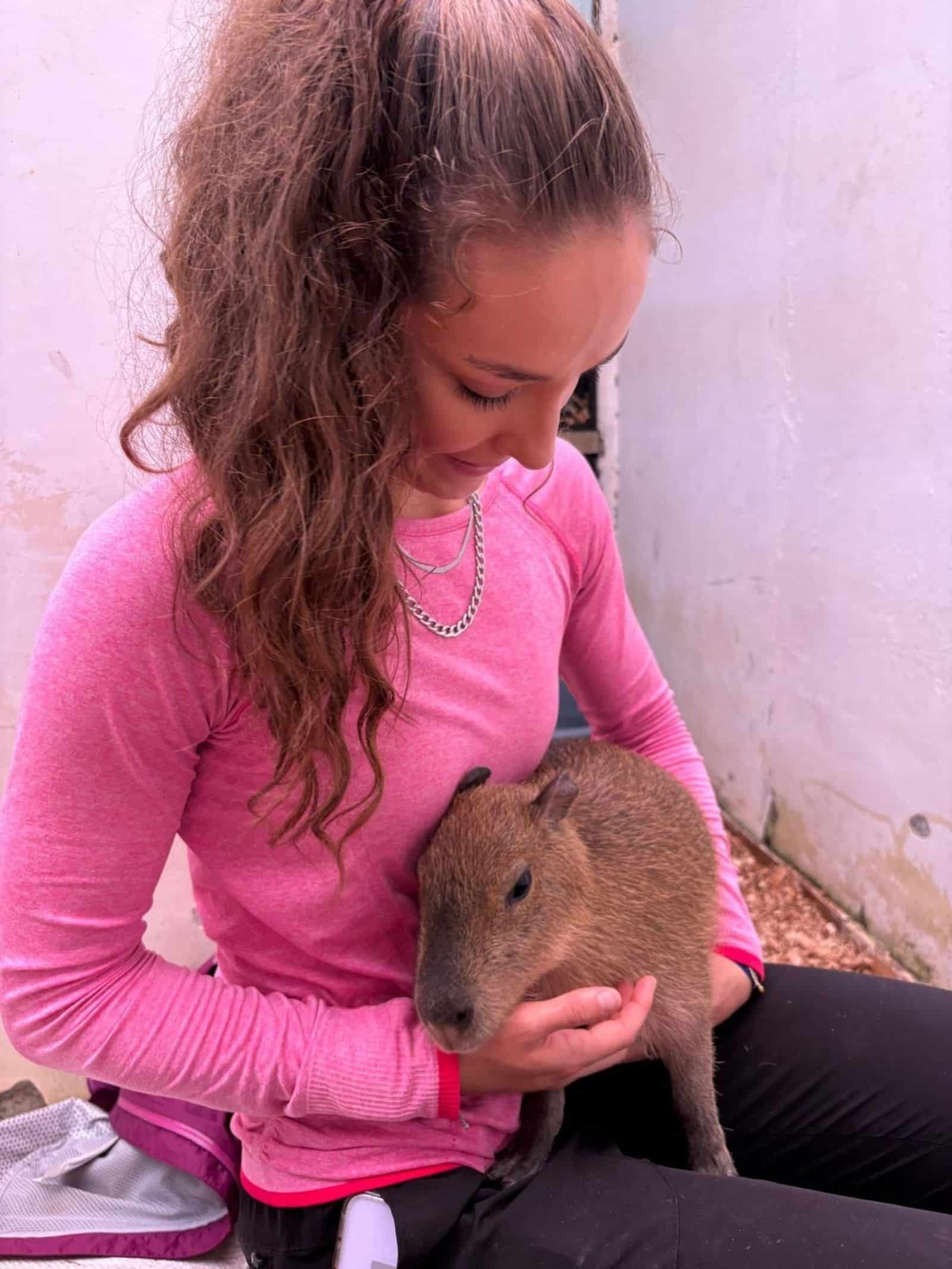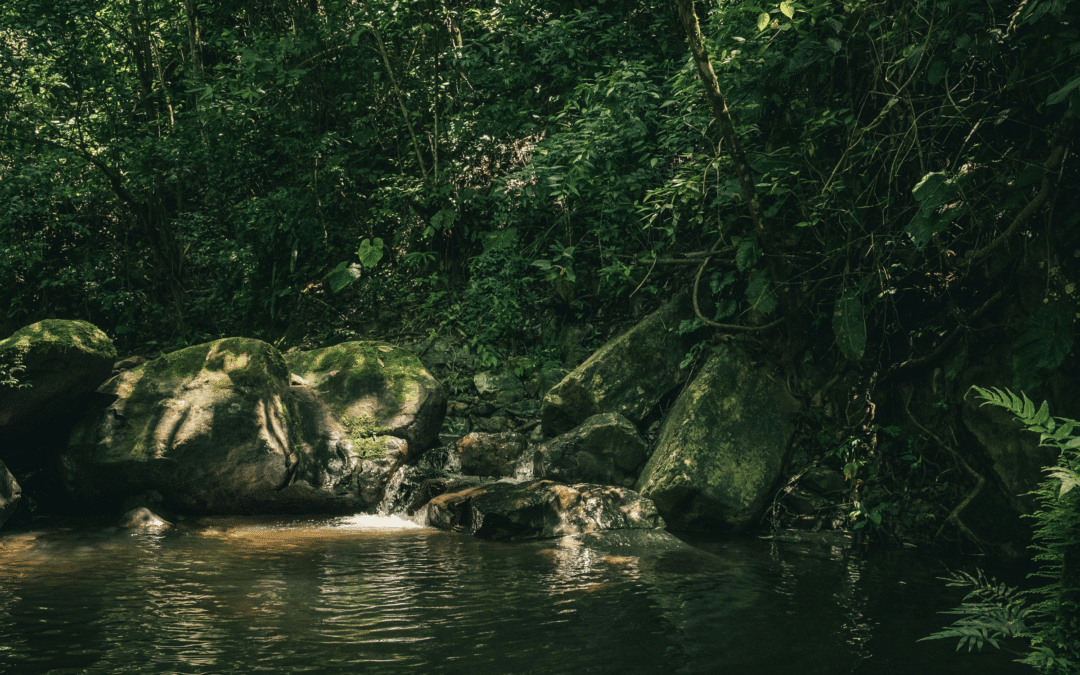Wildlife Rescue & Release Volunteer Project in Ecuador
Hi! My name is Carly McClung, and I’m from Denver, Colorado, USA. I currently study Animal and Veterinary Science with a concentration in Pre-Veterinary Medicine at the University of Wyoming. In the summer of 2025, I had the incredible opportunity to spend a month volunteering at an animal sanctuary located in the Amazon Rainforest of Ecuador.
I discovered this program through Kaya Responsible Travel, recommended by my university’s study abroad office. While browsing Kaya’s website, I was specifically looking for an animal-focused
volunteer opportunity that aligned with my passion for animal care and that could fit into my summer schedule. When I found the “Wildlife Rescue & Release Volunteer Project in Ecuador,” I knew that it was the perfect fit.

Arriving in Ecuador
I first arrived in Quito late at night and stayed in a hostel with a group of girls around my age who were also heading [to the sanctuary]. The next day, we toured Quito with our guide, Juan, visiting incredible sites such as the Basílica del Voto Nacional and the Church of La Compañía de Jesús, browsing through local souvenir shops, and ending the day with a chocolate tour. The following morning, we began our five-hour drive to Puyo, where the sanctuary was located.

Located in the Amazon Rainforest, the sanctuary was home to a diverse array of rescued animals, including monkeys, parrots, kinkajous, turtles, wild cats, capybaras, and many more, many of which had been victims of illegal trafficking. From the moment I arrived at the animal sanctuary, our team of volunteers got to participate in hands-on work with the animals. Some moments that stood out to me include bottle-feeding a baby anteater, giving belly rubs to a baby capybara, training Chichico monkeys, catching Pulastrix owls, and building enrichment activities for the parrots.
A Typical Day in Puyo
A typical day started with breakfast and a 7:30 a.m. team meeting. By 8:00 a.m., we began training our assigned animal, which we worked with throughout our entire stay. I trained a Chichico monkey, teaching it behaviors like “target” and “follow the cup.” After training, volunteers rotated through feeding rounds, such as the bird, mammal, raptor, monkey, or carnivore rounds.
Once morning rounds were complete, we completed extra projects like cleaning enclosures, maintaining habitats, repairing trails, or building new enrichment structures. After lunch, we repeated animal training sessions and completed our second feeding rounds before focusing on creative enrichment projects, everything from constructing ladders and toys to putting vegetation inside habitats. Our workdays usually wrapped up around 5:00 p.m., giving us time to relax and explore. In our free time, we’d go to the gym, shop downtown, play card games, eat frozen yogurt at a shop downtown, and much more.
Favorite Memories
In addition to working with animals, I also developed close friendships with other volunteers from around the world who also shared a passion for animal care. I met people from places such as Ireland, the United Kingdom, France, and Norway. Meeting these people improved the impact of this experience because I was able to learn more about other parts of the world and their cultures while still learning about animal care. Meeting these people also enhanced my experience because they were friends with whom I was able to fill the time and connect with.
Some of my top memories from my time in Ecuador include spending a weekend visiting Baños, where we drove to several popular lookout spots with amazing views, touring a local chocolate farm and factory, and hiking to a beautiful waterfall where we got to swim beneath it. I also loved painting pottery at a cozy coffee shop, having a bonfire at the sanctuary where we made s’mores under the stars, and enjoying a bracelet-making and movie night with the other volunteers. Some of the most unforgettable moments, though, were the small, personal interactions with the animals, such as having all the colorful birds land on my shoulders, feeling the baby anteater cling to me, feeding the kinkajou fruit, the moment when a woolly monkey held my hand, and so many more adorable interactions.
This month taught me not only about animal care but also about the importance of advocacy for those who cannot speak for themselves, the importance of cross-cultural collaboration, and the global impact of conservation efforts. I gained a deeper appreciation for conservation and the complexity of wildlife rehabilitation, and it deepened my passion to work with exotic animals and contribute to wildlife protection in my future.




Want to learn more about the Wildlife Rescue & Release Volunteer Project in Ecuador?


Recent comments